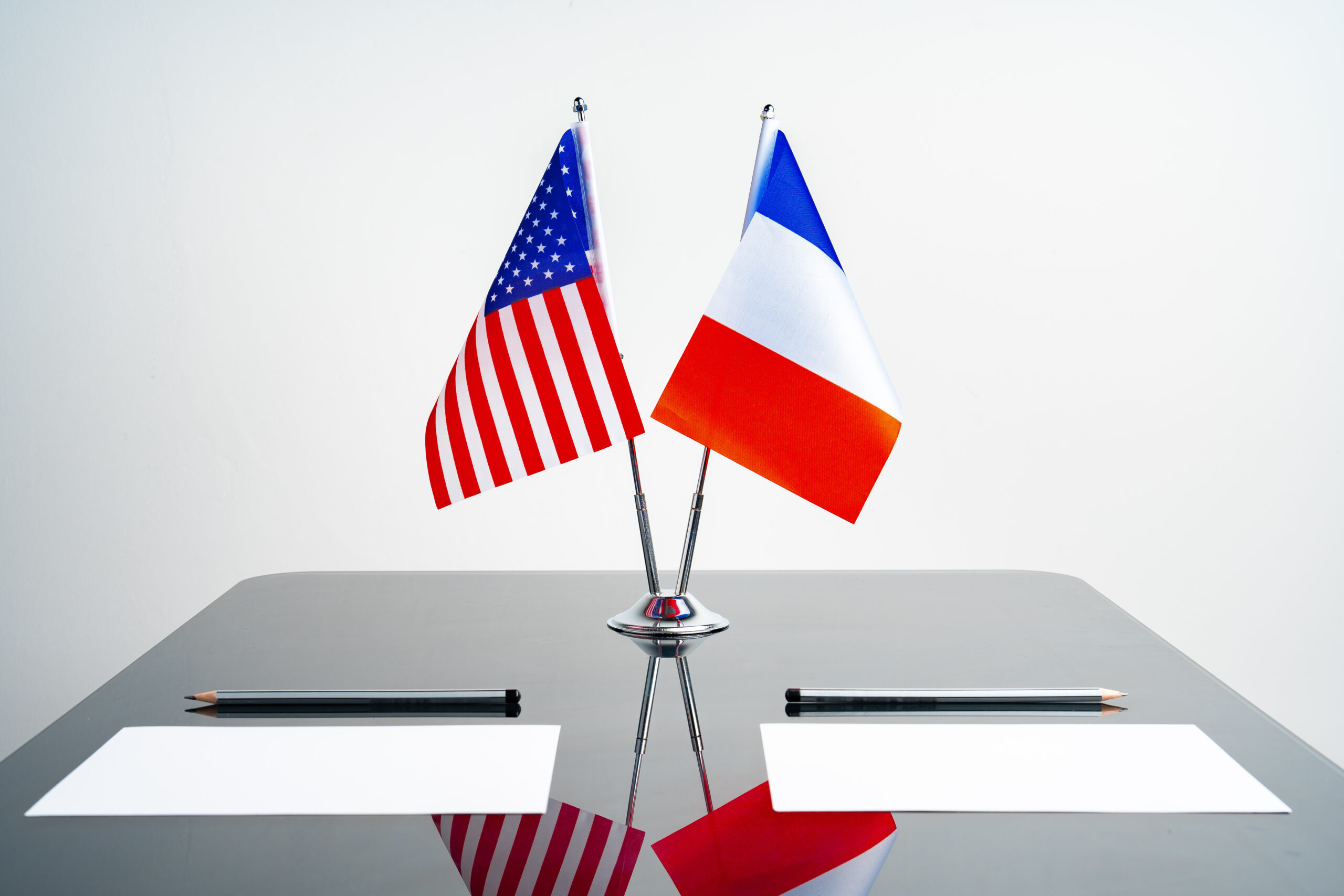Summary
- For most students, the process of choosing the right university quickly becomes overwhelming, with too much information to sift through and no easy way to compare institutions based on criteria that matter to them—like alumni networks, recent placement records, and the return on investment (ROI) they can expect from their education.
- For prospective students seeking admission, it is necessary to understand the eligibility and admission requirements of the top universities in their preferred country.
- The United States is known for having one of the finest higher education systems globally, with seven out of the top 20 universities in the world.
The United States and France are both advanced economies with an excellent standard of living. Naturally, both of these nations are attractive destinations for Indian students seeking to pursue higher education abroad and seek permanent residency.
However, France and the United States are quite different when it comes to the higher education system. In this article, we offer a detailed look at these two countries and their higher education system. We examine their top universities and which country might be a better fit for international students.

Also Read: Study Abroad Guide for Indian Students 2025
Top Universities: France vs USA
France and the United States are home to many universities that are considered among the best in the world.
The United States is known for having one of the finest higher education systems globally, with seven out of the top 20 universities in the world. France also has many good universities, including top-ranked institutions and specialized business schools.
Here is a list of the top 10 universities in both countries.
United States
| Serial Number | University | QS 2024 Global Rank | Location |
| 1 | Massachusetts Institute of Technology (MIT) | 1 | Cambridge, United States |
| 2 | Harvard University | 4 | Cambridge, United States |
| 3 | Stanford University | 6 | Stanford, United States |
| 4 | California Institute of Technology (Caltech) | 10 | Pasadena, United States |
| 5 | University of Pennsylvania | 11 | Philadelphia, United States |
| 6 | University of California, Berkeley (UCB) | 12 | Berkeley, United States |
| 7 | Cornell University | 16 | Ithaca, United States |
| 8 | University of Chicago | 21 | Chicago, United States |
| 9 | Princeton University | 22 | Princeton, United States |
| 10 | Yale University | 23 | New Haven, United States |
France
| Serial Number | University | QS 2024 Rank | Location |
| 1 | Université PSL | 24 | Paris, France |
| 2 | Institut Polytechnique de Paris | 46 | Palaiseau Cedex, France |
| 3 | Sorbonne University | =63 | Paris, France |
| 4 | Université Paris-Saclay | 73 | Gif-sur-Yvette, France |
| 5 | École Normale Supérieure de Lyon | 187 | Lyon, France |
| 6 | Ecole des Ponts ParisTech | 205 | Paris, France |
| 7 | Université Paris 1 Panthéon-Sorbonne | 283 | Paris, France |
| 8 | Université Paris Cité | =302 | Paris, France |
| 9 | Université Grenoble Alpes | 334 | Grenoble, France |
| 10 | Université de Montpellier | 448 | Montpellier, France |
While university rankings are certainly important, they are just one of many factors to consider when deciding where to apply. For most students, the process of choosing the right university quickly becomes overwhelming, with too much information to sift through and no easy way to compare institutions based on criteria that matter to them—like alumni networks, recent placement records, and the return on investment (ROI) they can expect from their education.
This is exactly where SelectRight (by GradRight) can help. SelectRight uses advanced data analysis to match students with universities that align with their academic, professional, and financial goals.
Here’s how SelectRight simplifies your university search:
- Start by creating a profile on SelectRight, where you can provide details about your academic background, interests, and career goals.
- SelectRight’s AI-powered algorithm analyzes over 8 million data points across 40,000 programs worldwide to match you with the best-fit universities.
- Compare shortlisted universities on advanced criteria like alumni success, placement records, and ROI, helping you make a well-rounded decision.
- Get access to free expert advice at any stage of your journey to assist with applications, scholarships, and more.
- Connect with fellow applicants, current students, and alumni from your shortlisted universities to gain insights and clarity.
If you’re weighing the benefits of studying in the USA versus France, start your journey with SelectRight to make a decision that’s backed by data, not just rankings. Sign up today to find the university that best aligns with your career aspirations and financial needs.
Also Read: 5 Most Affordable Universities in the USA for Indian Students
France vs USA: Eligibility and admission requirements
For prospective students seeking admission, it is necessary to understand the eligibility and admission requirements of the top universities in their preferred country. The application process varies significantly between these two countries. Let’s understand how.
Eligibility and Admission Requirements in France
French universities lay stress on academic excellence and offer a structured, research-focused curriculum. Here’s an overview of the admission process for master’s programs in France:
Educational Background
Students must have a bachelor’s degree in a relevant field to apply to a master’s course. Universities expect students to have the foundational knowledge necessary for pursuing a master’s. The French education system does not offer bridge courses and foundational courses. So, to get into a top university in France, good academic performance at school and college levels is a requirement.
Language Requirements
Students need to have proficiency in the French language. International students are usually required to take a recognized language proficiency test such as Diplôme d’études en langue française (DELF) and Diplôme approfondi de langue française (DALF).
But increasingly, universities are offering courses taught in English, particularly courses on management, international business, and finance. For these courses, you need an IELTS score of 6.0 – 7.0 or a TOEFL score of 80 – 100.
Entrance Exams
Public universities in France do not require the candidates to submit scores from standardized testing such as GRE and GMAT. However, the best universities–known as Grandes Écoles (great schools)–have an admission test known as Concours.
Documents
The following documents are typically required for admission to a French university:
- Curriculum Vitae
- Academic transcripts
- Statement of Purpose
- Recommendation letters
- A research proposal (for research-intensive master’s programs)
Application Process
You have to apply through a centralized platform known as Campus France.
Campus France is a French public agency that promotes French higher education and welcomes foreign students to France.
If you want admission to a French university, visit the Campus France website and enroll yourself. It will provide you with:
- Information and guidance on institutions and programs
- Assistance with applications and visa procedures
Eligibility and Admission Requirements in the USA
The education system in the USA is known for its flexibility. There is a strong emphasis on academic achievements and leadership qualities. Here’s an overview of the admission process for master’s programs in the USA:
Educational Background
Students need a bachelor’s degree from a related stream. Though some programs allow a varied educational background, a master’s in engineering or management requires prior knowledge. Some domains such as finance allow students to complete foundation or bridge courses.
Most reputed universities also look for above-average GPA–from 2.75 – 3.75 out of 4. Top institutions like Stanford require a GPA of 3.8 or more.
Standardized Tests
Till a few years ago, all students who sought admission to a master’s course in engineering or STEM field had to score well on the GRE.
However, after the disruption caused by Covid-19, the requirement has changed to some extent. While institutions such as Purdue University and MIT don’t require the GRE for admission, some like Harvard University and the University of California, Berkeley do require a GRE score.
Keep in mind that admission to a top-notch MBA course would still require GMAT, and studying medicine and law would still require MCAT and LSAT scores respectively.
English Language Proficiency
International students from countries where English is not the first language have to demonstrate proficiency through a language test. Commonly accepted tests are TOEFL and IELTS, and most programs require minimum scores of 80 – 100 on TOEFL and 6.0 – 7.0 on IELTS.
Some universities may also accept alternative exams like the Duolingo English Test or Pearson Test of English.
Documents
Here are the key documents you’ll need to apply for a degree in the USA:
- Resume
- Academic Transcripts
- GRE/GMAT scores
- Letters of Recommendation
- Statement of Purpose
- Research Proposal (if applicable)
Application Process
There is no centralized platform for admission to different universities in the USA. You have to apply individually to each university and submit your documents along with an application fee. You might receive admission to multiple universities and have to make a choice.
Classes begin in Fall (August-September) and Spring (March-April). The admission process begins about six months before each intake.
Also Read: Is MS in artificial intelligence USA worth it?
France vs USA: Tuition fees
Tuition fees are perhaps the biggest concern among students looking to study abroad. France offers a more affordable option for higher education than the USA. Here is an overview of education costs in the USA and France.
Tuition Fees in France
In France, tuition fees are relatively lower compared to many other countries, including the USA. The French government provides large subsidies towards higher education, making it highly affordable.
Public Universities
Tuition fees at French public universities typically range from €3,770 to €8,000 (₹3,33,100 to ₹7,06,900)
Grandes Écoles and Private Universities
The cost of education at the Grandes Écoles might scale to €12,000 (₹10,60,000) per year. Business management studies are more expensive compared to other courses.
Tuition at private universities can vary widely, ranging from €10,000 to €15,000 (₹8,83,600 to ₹13,25,400) per year.
Tuition Fees in the USA
Tuition fees in the United States are generally higher than in France. It also depends on the type of university, its ranking, and the course. The US government offers no educational subsidies to international students.
Public Universities
Tuition for postgraduate programs usually ranges from $20,000 to $35,000 (₹1,700,200 to ₹2,975,500) per year. Universities might finance a part of the cost for students who show adequate merit.
Private Universities
These are more expensive with annual costs between $40,000 and $60,000 (₹34,00,500 to ₹51,00,800). Some courses, such as business management and law, at Ivy League institutions could cost even more.
Also Read: Cost of Masters in France For Indian Students: Visa Costs, Tuition Fees
Living expenses in the USA and France
Besides tuition fees, living expenses are another critical factor when considering studying abroad. Living expenses in France are generally more affordable than in the United States.
Living Expenses in France
The cost varies depending on the location and Paris, the capital, is the most expensive. Given its status as one of the best places to live in, that is hardly surprising.
Accommodation
Monthly rent can range from €400 to €900 (₹35,340 to ₹79,530) for a small studio apartment on the outskirts of Paris.
Food
You can expect to spend approximately €200 to €400 (₹17,670 to ₹35,340) per month on groceries and dining out. Eating out can break the monotony of cooking daily but is expensive.
Transportation
European cities have extensive public transport networks. A monthly pass costs €75 (₹6620) in major cities like Paris.
Utilities
Monthly utility costs including electricity, heating, and water average around €100 to €200 (₹8,830 to ₹17,670).
Overall, the estimated monthly living expenses for a student in France range from €800 to €1,500 (₹70,690 to ₹1,32,540).
Living Expenses in the USA
Parts of the USA, such as California and Massachusetts have a very high cost of living. Here is an analysis:
Accommodation
The cost of renting is very high in places such as New York and California. A small apartment could cost between $2,500 and $3,500 (₹2,12,500 to ₹2,97,550) per month. In cities such as Dallas and Atlanta, the cost drops to a more reasonable $1,300 (₹1,10,500) monthly.
Food
You can expect to spend around $300 and $600 (₹25,500 to ₹51,000) per month on groceries. Food inflation has been quite high for the past few years.
Transportation
Public transportation costs vary between cities. The USA doesn’t have an extensive intra-city public transport system though all large cities have bus service and subway systems. For most students, who don’t live on campus, buying a used car is a good alternative.
Utilities
Average utility bills are more expensive than in France. It can range from $250 to $350 (₹21,250 to ₹29,750) per month.
The total living expenses for international students in the USA typically range from $10,000 to $25,000 (₹8,50,000 to ₹21,25,350) annually.
Note: It’s clear that studying abroad for a master’s degree in either the USA or France can be expensive. Even if you manage a scholarship or choose a university with lower tuition fees, living expenses can add up quickly. This is why most students need a low-interest student loan. However, many students end up with loans that aren’t the best fit, often paying extra in interest or settling for terms that don’t suit their needs.
FundRight (by GradRight) was created to solve these problems.
FundRight is a platform where top lenders compete to offer you the best education loan.
- First, create a profile on FundRight, detailing your course and financial needs.
- Then, you’ll receive competitive offers from up to 15 trusted lenders within two days.
- You can compare these offers based on interest rates, loan terms, and benefits.
- Get guidance from a financial expert at any stage to help you make the best decision.
- Once you’ve chosen the right offer, securely upload your documents, and you’re on your way to loan approval.
Ready to secure a loan tailored to your needs? Start your search with FundRight today.
France vs USA: Work Permit and PR
Many Indian students who go abroad, want to find work and seek permanent residency after their education. Both France and the USA offer ample opportunities to find work and settle down.
Work Permits in France
Graduates from French universities can apply for a temporary residence permit called the Autorisation Provisoire de Séjour (APS) after completing their degree.
APS allows students to stay in France for 24 months and seek employment related to their field of study. They can work in any domain and the only condition is that their employment pays at least 1.5 times the minimum wage.
Following APS, one can apply for a long-term work permit which requires sponsorship from the employer.
After five years of continuous residence, those on a work permit may apply for PR.
Work Permits in the USA
Those on an F-1 visa can apply for OPT or Optional Practical Training. This allows them to work in their domain for 12 months after graduation. For STEM graduates OPT can be extended to 36 months.
If students succeed in finding permanent employment they can transition to an H1-B visa. It requires sponsorship by the employer. The visa is valid for three years and can be extended at least once.
After a few years of residency in the USA, one can apply for PR status. It can take time to secure a Green Card.
Average Salaries: France vs USA
The average salary in the USA is much higher than in France. Given the position of the USA as the world’s leading economy, this is no surprise.
The average annual salary in the USA is around $59,000 (₹50,15,855), while in France, it’s approximately the equivalent of $34,000 (₹28,90,400).
The USA also has a larger job market with a huge appetite for skilled engineers, programmers, managers, and other professionals.
The median pay for professionals in the USA is $139,000 (₹1,18,17,050) which is a considerable amount.
On the other hand, the cost of real estate and rent is lower in France and the healthcare is free.
Also Read: Part-Time Jobs in USA for Indian Students: Visa regulations & salary
France vs USA: Which country is better?
From a purely monetary point of view, if the sole aim is to maximize income, the USA is a better alternative. Pay is more and accompanied by handsome bonuses and stock options.
The USA also has a larger number of companies in emerging sectors. It is home to the biggest tech companies in the world and eight of the top 10 businesses in the world are based out of America.
This makes the USA an ideal choice for economic migration.
FAQs
Yes, France is considered a very good country to study abroad. The country is recognized for its high-quality education system, prestigious universities, and rich cultural experiences. Tuition fees are quite affordable, making it an attractive option for international students.
France is an excellent choice for Indian students. One can study at internationally renowned schools for INR 15 lakhs or less annually. The cost of living is bearable and the weather is pleasant. France has a rich history and is a very welcoming country with a tolerant atmosphere.
Language is a major barrier to studying and living in France. It takes a student at least a year of regular study to become fluent in French and pass the necessary language proficiency examinations. Most students do not want to invest that amount of effort.
Yes, it is quite possible to secure PR in France. After five years of employment, France allows foreigners to apply for permanent residency.
There is no barrier to securing PR for Indian students. After working in France for a few years it is quite easy to apply for a permanent residency. If the applicant is employed, there is no reason for PR status to be denied.


























































































































































